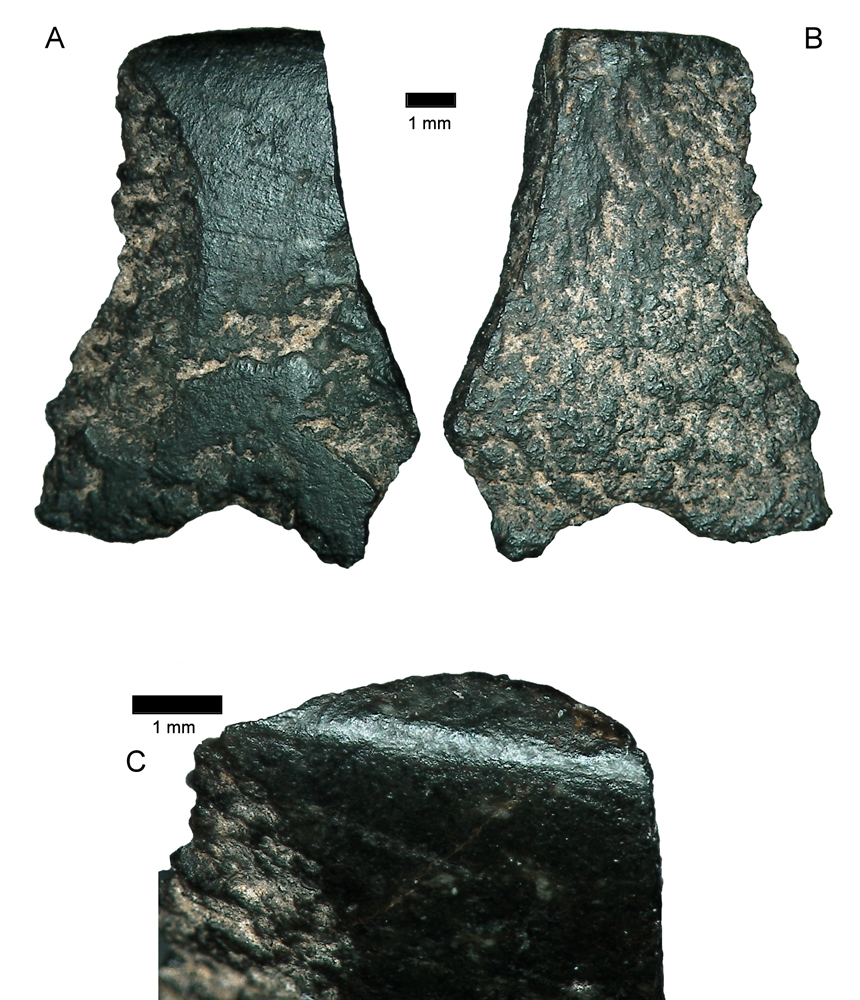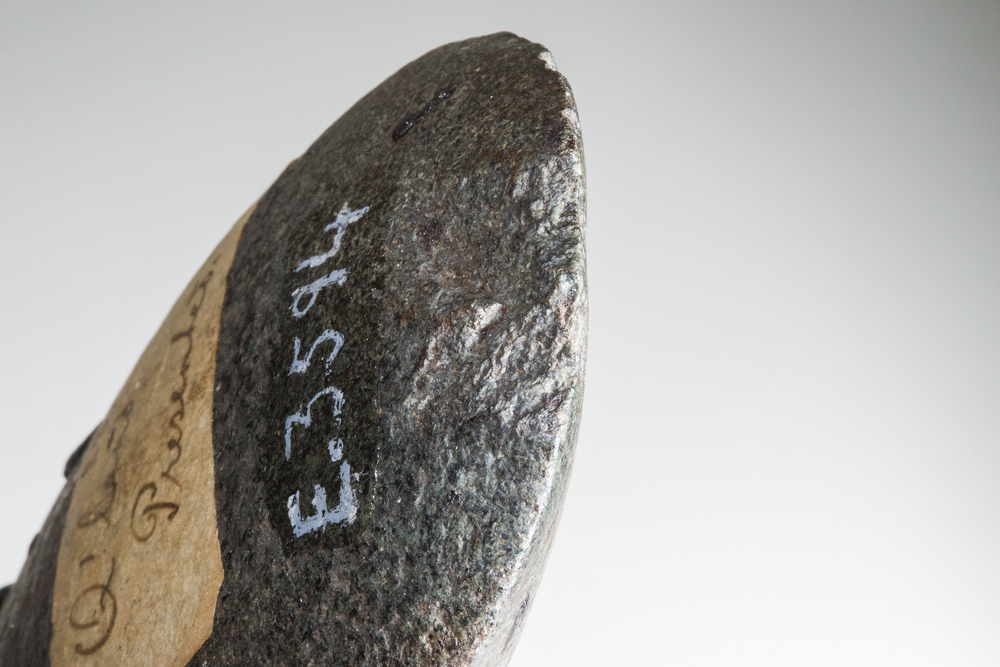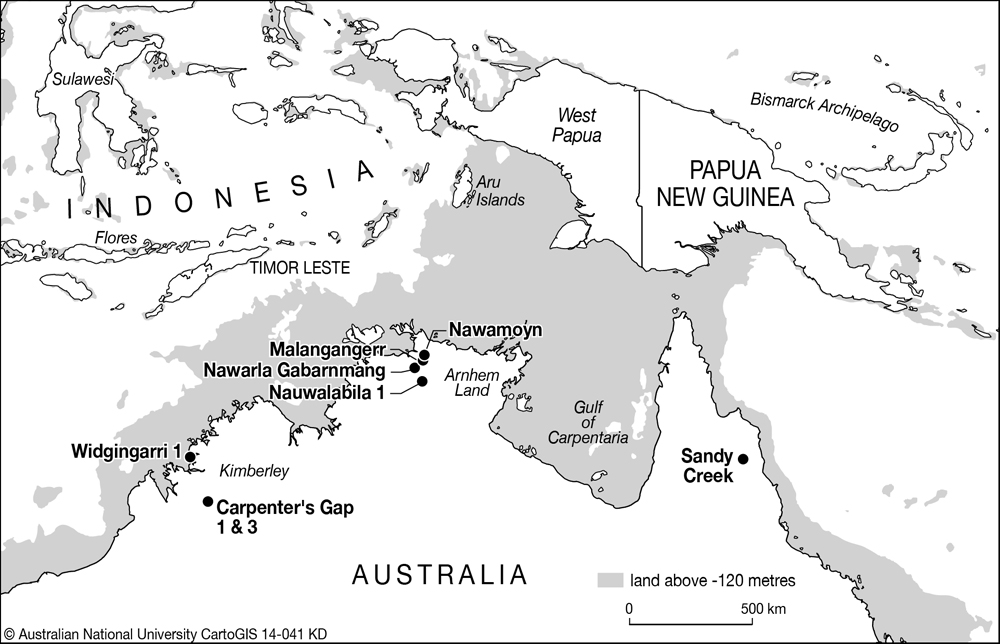Newfound Ax Blade May Be World's Oldest, Researchers Say

What could be the world's oldest stone ax blade has been identified from fragments found in an ancient rock shelter in northwest Australia, according to archaeologists.
The ax fragments were found in layers of sediment at Carpenter's Gap, a large rock shelter in Windjana Gorge National Park,in the Kimberley region of Western Australia. Using carbon dating, the fragments are estimated to be between 46,000 and 49,000 years old — much older than similar composite stone axes found elsewhere in Australia and Japan that date from between 30,000 and 35,000 years ago, the researchers said.
A key feature of the newfound ax is that its stone blade has been ground down on both sides to form a beveled edge — an early tool technology unique to the modern human species (Homo sapiens sapiens) that would have taken hundreds of hours of grinding to achieve, said study lead author Peter Hiscock, an archaeologist at the University of Sydney in Australia. [See photos of the newfound ax blade from Carpenter's Gap]
The ground stone edge distinguishes the tool from much older and smaller "hand axes" that were made by flaking, or "knapping," stones to form a cutting edge. Archaeologists think hand axes were used mainly for cutting and scraping, and were not attached to a haft or handle, Hiscock said.
Ancient tools

Early hand axes that are up to 1.6 million years old have been found at Olduvai Gorge in Tanzania, where they are thought to have been made by communities of the human ancestor Homo habilis. Later hand axes, some up to 1 million years old, have been found in Europe with the remains of the early human species Homo erectus.
But Hiscock said hafted (or handled) and ground-edge stone-headed axes for heavier work, similar in function to modern steel-headed axes, were distinctive to modern humans.
"Because they're heavy objects, you can put in a percussive force with an ax that's hafted, whereas if you hold it in your hand you can't really do that," Hiscock told Live Science.
Sign up for the Live Science daily newsletter now
Get the world’s most fascinating discoveries delivered straight to your inbox.
In most of the world, hafted stone axes appeared in human societies around the same time as the beginnings of agriculture, about 6,000 years ago. But in Australia, the development of hafted axes appeared to occur much earlier, he said.
"The importance of this ax is that it dates to about the same time as the arrival of humans in Australia, and so it tells us about the journey from Africa to Australia as modern humans expanded across the globe," Hiscock said. [Image Gallery: Our Closest Human Ancestor]
Archaeological sites in Southeast Asia and India from the same time period, and where the first Australians are assumed to have arrived from, did not have evidence of hafted axes: "It looks like this is a technology that was independently invented in Australia, and, as it turned out, earlier than anywhere else in the world," he said.
"This tells us that the humans who were dispersing were successful partly because they were very innovative — they were able to construct new technologies to exploit new environments," Hiscock said. "And what we're seeing is one snapshot of that new technology that was developed for a new environment, in this case Australia."
Analyzing the fragments
The ax fragments were found by archaeologist Sue O'Connor, a professor in the School of Culture, History & Language at the Australian National University (ANU) and co-author of the new study, during digs in the 1990s at Carpenter's Gap, one of the continents' earliest human habitation sites.

"It's just the most beautiful place," O’Connor told Live Science. "You have these rock shelters with stal [stalagmite and stalactite] formations hanging down at the entrance, and spectacular rock art galleries with paintings and engravings — it's an incredibly spectacular environment."
When some of the smaller basalt stone fragments from the digs were reanalyzed by Hiscock and ANU doctoral student Tim Maloney in 2014, they showed marks on the surface that could only have been caused by deliberately grinding it against another stone.
Further analysis of the fragments revealed that they included part of the cutting edge of the stone ax blade.
"This is modern human technology, and nowhere else is it found as old as in Australia," O'Connor said. "Elsewhere, they appear in the Neolithic period, along with pottery and agriculture, [but] here they are tens of thousands of years earlier, and found in a hunter-gatherer context."
The need for strong tools
Although the fragments did not include the attachment of the haft, the design of the cutting edge matched ancient stone axes found elsewhere in Australia, the researchers said. [The 7 Most Mysterious Archaeological Finds on Earth]
"We have whole examples [of axes] dating back to 30,000 years [ago] that we know were hafted, and our assumption is that when we've got these intersecting facets on these flakes that it has come from a hafted tool," O'Connor said.
She thinks the development of ground-edge axes by early human settlers in Australia may have been a consequence of the continent's unique vegetation, which includes some of the toughest hardwoods in the world.
While most tools used by early humans in Australia would have been made from wood, like spears or digging sticks, they may have needed stone tools to make wooden tools from the available timber, she said.
O'Connor added that when the first British settlers arrived at Sydney Cove in 1788, they found the native timber so tough that they had to request supplies of tougher nails, axes and other tools to handle it.
"In mainland Southeast Asia, [early humans] would have used bamboos, which are very light and easy to work, and more rainforest softwoods," O’Connor said.
"But Australia has a unique flora — and just as the first British settlers had to call back for stronger tools from Sheffield [a steel-working city in England], the first Australians had to be incredibly innovative in the face of this new vegetation, on this new continent with its unique sets of challenges," she added.
O'Connor and archaeologist Jane Balme, of the University of Western Australia, are seeking funding for further excavations at the Carpenter's Gap site, which they hope will include much larger excavation areas in the rock shelter, as well as excavations in open locations nearby.
The new research was published online Monday (May 9) in the journal Australian Archeology.
Follow Tom Metcalfe on Twitter @globalbabel. Follow Live Science @livescience, Facebook & Google+. Original article on Live Science.
Tom Metcalfe is a freelance journalist and regular Live Science contributor who is based in London in the United Kingdom. Tom writes mainly about science, space, archaeology, the Earth and the oceans. He has also written for the BBC, NBC News, National Geographic, Scientific American, Air & Space, and many others.










